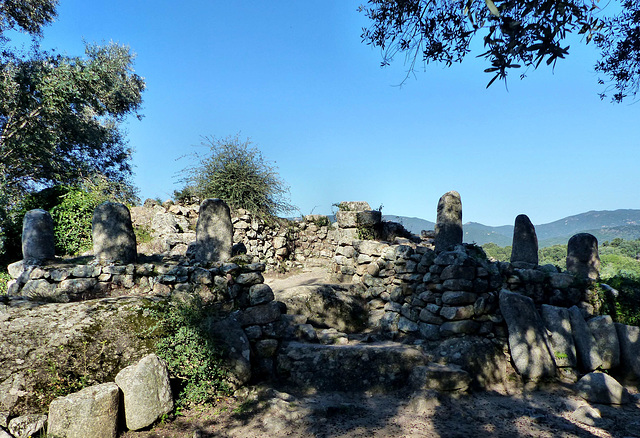Filitosa
Filitosa
Filitosa
Filitosa
Filitosa
Filitosa
Filitosa
Punta Di Mucchiu Biancu
Montilati - San Quilico
Montilati - San Quilico
Montilati - San Quilico
Montilati - San Quilico
Porto-Vecchio - Salt pans
Porto-Vecchio - Beaches
Porto-Vecchio - Saint Jean-Baptiste
Porto-Vecchio - Saint Jean-Baptiste
Porto-Vecchio - Saint Jean-Baptiste
Porto-Vecchio - Sainte Croix
Porto-Vecchio - Pharma (2
Bonifacio - Santa Reparata
Bonifacio - Santa Reparata
Bonifacio - Santa Reparata
Bonifacio
Bonifacio - Il Torrione
Bonifacio
Bonifacio
Bonifacio
Bonifacio
Bonifacio
Bonifacio
Bonifacio
Bonifacio
Bonifacio - Panini
Bonifacio - Le Lavoir de la Marine
Bonifacio - Maora Plage
Filitosa
Ajaccio
Ajaccio
Ajaccio - St. Erasme
Ajaccio - St. Erasme
Ajaccio -Cathédrale Notre-Dame-de-l'Assomption
Ajaccio -Cathédrale Notre-Dame-de-l'Assomption
Ajaccio
Corte - Next to - San Giovanni Battista
Corte - Next to - San Giovanni Battista
Corte - San Giovanni Battista
Corte - San Giovanni Battista
Corte - San Giovanni Battista
Corte - San Giovanni Battista
Corte - San Giovanni Battista
Corte - San Giovanni Battista
Corte - San Giovanni Battista
Corte - La citadelle
Corte - La citadelle
Corte - Eglise de l'Annonciation
Corte - Poissonerie
Corte - Pascal Paoli
Corte - Pascal Paoli
Alzi - Sheep
Cambia - San Quilico
Cambia - San Quilico
Cambia - San Quilico
Cambia - San Quilico
Cambia - San Quilico
Cambia - San Quilico
Cambia - San Quilico
Cambia - San Quilico
Cambia - San Quilico
Cambia - San Quilico
Cambia - San Quilico
Cambia - San Quilico
Cambia - San Quilico
Cambia - San Quilico
Cambia - Green whip snake
Cambia - Corsoli
Cambia - Santa Maria
Cambia - Santa Maria
Cambia - Santa Maria
Cambia - Santa Maria
Calvi - La Citadelle
Lumio - San Pietro e Paolo
Lumio - San Pietro e Paolo
Lumio - San Pietro e Paolo
Lumio - San Pietro e Paolo
Lumio - San Pietro e Paolo
Aregno - Trinita e San Giovanni Battista
Aregno - Trinita e San Giovanni Battista
Aregno - Trinita e San Giovanni Battista
Aregno - Trinita e San Giovanni Battista
Aregno - Trinita e San Giovanni Battista
Aregno - Trinita e San Giovanni Battista
Aregno - Trinita e San Giovanni Battista
Aregno - Trinita e San Giovanni Battista
Aregno - Trinita e San Giovanni Battista
Aregno - Trinita e San Giovanni Battista
Aregno - Trinita e San Giovanni Battista
Aregno - Trinita e San Giovanni Battista
Location
See also...
Keywords
Authorizations, license
-
Visible by: Everyone -
All rights reserved
-
90 visits
Filitosa


The island of Corsica is one of the 18 regions of France. It was colonized the Carthaginians, the Greeks, the Etruscans and the Romans. After the Roman empire collapsed, Corsica got invaded by the Vandals and the Ostrogoths. For a short while the island belonged to the Byzantine Empire, then the Franks granted the island to the Pope, in the early 11th century Pisa and Genoa together freed the island from the threat of Arab invasion. The island came under the influence of the Republic of Pisa, later it belonged to Genua for centuries. In 1755 after a long fight for independence from Genoa the independent Corsican Republic was proclaimed, but in 1769, when the island was conquered by France. As the areas near the coast over centuries have been threatened by attacks and raids of pirates many old hamlets and dwellings are wide inland, high in the mountains.
Filitosa is a prehistoric site occupied from the ancient Neolithic until Antiquity. It is known for its spectacular concentration of menhirs statues with many details.
The site was discovered in 1946 by the owner of the site, Charles-Antoine Cesari. Excavations began in 1954. The menhirs, representing armed characters, and the potteries found on the spot date from about 3300 BC. The site was discovered in 1946 by the owner of the site, Charles-Antoine Cesari. Excavations began in 1954. The menhirs, representing armed characters, and the potteries found on the spot date from about 3300 BC. Some of the menhirs are two or three meters high. They were erected around 1500 BC.
.
Filitosa is a prehistoric site occupied from the ancient Neolithic until Antiquity. It is known for its spectacular concentration of menhirs statues with many details.
The site was discovered in 1946 by the owner of the site, Charles-Antoine Cesari. Excavations began in 1954. The menhirs, representing armed characters, and the potteries found on the spot date from about 3300 BC. The site was discovered in 1946 by the owner of the site, Charles-Antoine Cesari. Excavations began in 1954. The menhirs, representing armed characters, and the potteries found on the spot date from about 3300 BC. Some of the menhirs are two or three meters high. They were erected around 1500 BC.
.
- Keyboard shortcuts:
Jump to top
RSS feed- Latest comments - Subscribe to the comment feeds of this photo
- ipernity © 2007-2024
- Help & Contact
|
Club news
|
About ipernity
|
History |
ipernity Club & Prices |
Guide of good conduct
Donate | Group guidelines | Privacy policy | Terms of use | Statutes | In memoria -
Facebook
Twitter

Sign-in to write a comment.